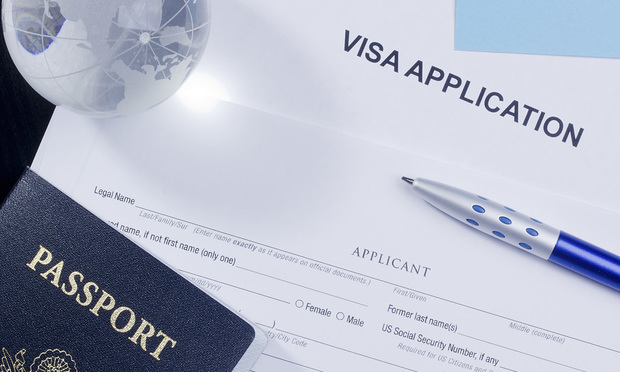 Just over half of HR survey respondents say their organizations have sponsored an employment-based visa for at least one worker in the past five years. (Photo: Shutterstock)
Just over half of HR survey respondents say their organizations have sponsored an employment-based visa for at least one worker in the past five years. (Photo: Shutterstock)
The nation's employers and education systems can do a lot to lessen the growing worker skills gap by providing more of the right training, but even that's not enough in many circumstances—which is why more organizations are now also pulling talent from other countries, according to the Society for Human Resource Management's 2019 State of the Workplace report.
“Foreign workers are a critical complement to the domestic workforce, especially as the U.S. labor market faces an aging workforce and record low unemployment,” the authors write.
A majority of the human resources professionals responding to SHRM's immigration survey say that foreign-born talent has the right cross-cultural competencies needed for the job—and the workers positively affect the business productivity and the financial growth of their organizations. A majority also believe that such talent plays a positive role in driving U.S. innovation and economic growth.
Related: Changes to H-1B visa program creating challenges for employers
Just over half (52 percent) of the survey respondents say their organizations have sponsored an employment-based visa for at least one worker in the past five years. The most popular type of Visa is the H-1B for foreign nationals in specialty occupations (87 percent), but other common types include L-1 for intra-company specialized knowledge (35 percent); F-1/OPT for students in academic programs (34 percent); J-1 for exchange visitors (29 percent); and E-1 for treaty traders and investors.
However, organizations face challenges when hiring foreign talent, including lengthy processing times (66 percent); unpredictability of the visa process (55 percent); and complex visa application paperwork (60 percent).
Moreover, a third (33 percent) of the respondents say that there are just not enough visas to meet their needs.
“Policymakers should provide enough visas to allow businesses to recruit, hire, transfer and retain top talent,” the authors write.
While two-thirds (67 percent) of the respondents participate in E-Verify, those that don't say the main reason is that the system doesn't eliminate the required paper-based Form 1-9 process – so why duplicate efforts?
No wonder, then, that 78 percent of respondents say they would support a mandatory e-Verify system that eliminates the requirement to complete the Form 1-9.
More than half (56 percent) also say that the U.S. government should create a “trusted employer program” that would streamline the process for low-risk immigration-compliant employers to obtain visas and save resources.
“The data all points to the conclusion that U.S. businesses need a modern, predictable and efficient employment-based immigration system,” the authors conclude.
Read more:
© 2025 ALM Global, LLC, All Rights Reserved. Request academic re-use from www.copyright.com. All other uses, submit a request to [email protected]. For more information visit Asset & Logo Licensing.








